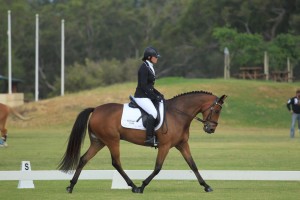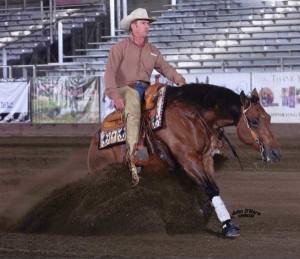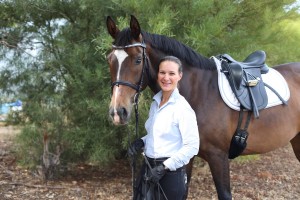Editor’s Note: Shelley Appleton is a new guest columnist for BestHorsePractices. Her articles are part of a body of work dedicated to horsemanship knowledge and self-improvement called: 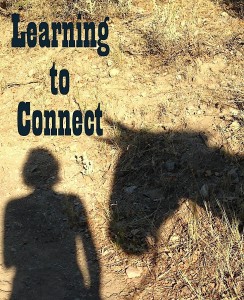 Learning to Connect.
Learning to Connect.
Appleton is a lecturer at the School of Pharmacy at Curtin University in Bentley, Australia, a dressage rider, and horse training coach.
After reading and watching Evidence-Based Horsemanship (EBH), a book and DVD by Dr. Steve Peters and Martin Black, and working with horseman Warwick Schiller, she made a “massive conceptual leap” which synthesized her horsemanship with her grasp of the science.
This year, she will be a guest lecturer in the Horse Physiology and Behavior unit at Murdoch University.
“My focus is on human learning and how to make decisions when working with horses. So much horsemanship focuses on the horse’s 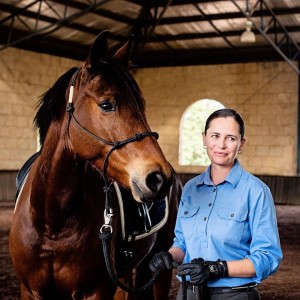 ‘problems’ or its ‘training’ when really the deciding factor is who is hanging onto its lead rope or sitting in the saddle.
‘problems’ or its ‘training’ when really the deciding factor is who is hanging onto its lead rope or sitting in the saddle.
Sign up for our free weekly newsletter!
By Shelley Appleton
Learning Dressage & Crossing Thresholds of Understanding
How people learn is a fascinating thing and it is believed that as we gain experience and practice skills we construct a scaffold of neural circuits that expands and changes as our knowledge and skills grow.
As part of my job as a university lecturer, I research human learning. On a personal but related level, nothing has intrigued me more than how I have learned to ride and train dressage horses.
Two concepts have had a massive impact on my overall understanding of horses and dressage. They are good examples of what learning researchers describe as “threshold concepts.”
Some threshold concepts are hard to get your head around. Others are simply ideas you never saw as relevant or obvious. It’s the latter that I’ll discuss.
Once you pass through the “thresholds” of learning these concepts they totally change your perspective and open up a new dimension of understanding. People describe them as “light bulb moments,” or “when the penny dropped” as they are enlightening and perception-altering.
THRESHOLD CONCEPT #1: HOW to TEACH HORSES
If you had told me five years ago that I’d learn about dressage from reining horse trainers, I’d have labeled you nuts. Yet reining horse trainers have helped me learn more about HOW to training dressage horses than any dressage coach, book, video, or presentation.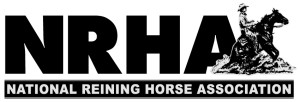
The goal of reining stated in the sports rulebook is to demonstrate the “willingly guided horse” who does relatively simply maneuvers (when compared to a grand prix dressage test) at great speed with minimal control. Even though I had ridden to a relatively good level in dressage, the first time I rode a reining horse I couldn’t even ride the fast canter circles. I couldn’t do it without the contact one uses in dressage. My circles were hardly circles and I had to do a lot of slow loping to get the hang of it. I understood then why training in reining is more explicit and detailed in HOW to communicate with the horse.
In dressage, we have leverage of contact that allows us to physically manipulate and lock the horse into a frame, shape and line
with our reins and legs without necessarily having the horse understand. Reining is done on a loose rein.
Thanks to reining, I crossed my first major threshold of understanding and learned how to make horses responsive to aids or cues. I learned horses respond most to the release of pressure, not the application of it.
The revelation had me tacking up my “hard-mouthed” horse, getting on, and picking up one rein to test my horse’s understanding of lateral flexion. I learned he had no understanding.
I was horrified. At age of 8, he actually had no idea why the bit was in his mouth. He had just endured me pulling on him and physically making him turn and flex.
After just 30 minutes of flexing him, releasing the pressure, and dropping the rein contact each time he gave to pressure (Dropping the rein contact meant I was saying “yes, that is the correct response”), I taught him the lateral rein responses and as a result I no longer had a “hard-mouthed” horse. I just had a horse who was uneducated about the bit and I had been clueless how to teach him.
The other element I learned from reining was to escalate my cues and be consistent in their application so that the horse eventually learns to go off the lightest of cues.
- As a result, the amount of pressure my horses endure has dramatically reduced.
- Their focus on me increased as they discovered they could control the pressure by responding to cues.
- They physically changed shape as their resistance from being physically hauled on disappeared.
- My dressage performances improved.
The other cool thing is that my appreciation and understanding of pressure and release helped me better understand of horse behavior.
THRESHOLD CONCEPT #2: HOW to RIDE & SIT on a HORSE
Recently, a lovely friend pointed out that all my horses had the same minor stiffness through their left shoulder and that since I was the sole common denominator, it must be something I was doing.
I had been so focused on clear application of cues and pressure that I had not considered the impact I was having by just sitting on their backs.
Now, I’ve embarked on a real focus of riding position and core strength. So here I crossed the second threshold of learning and
for the past few months I have been working with Katrin Kuenstler, a German woman living (thankfully!) near me. She has been a professional dancer and is now a dressage coach and Pilates instructor. Kuenstler has a tremendous eye for body position and has helped me become more aware of body movement and strength.
I have been hitting the exercise mat and doing Pilates twice a week. One weekly lesson is dedicated purely on riding position. Pilates has helped me discover that I had a weak core (even though I rode a number of horses per day and considered myself quite fit), and that I was really one-sided in terms of strength and flexibility.
Even though I “looked fine,” I discovered I was sitting predominantly on one seat bone, gripping with my left knee, dropping my right shoulder, and tending to lean ever so slightly back.
No wonder my horses were stiff through their left shoulder whilst coping with me hanging on to them on that side! Over the months, I have developed a lot of body awareness. I am getting stronger in my core and can sit in a more balanced position. I’m therefore quieter on a horse.
My ability to hold a connection with them that is more consistent at all paces, As a consequence, the horse feels less overall pressure and bears less training stress.
To sum:
Learning how to teach horses has helped me understand how to apply pressure in a way that is consistent and predictable for my equine partner. The communication is clearer.
Learning to sit well on a horse reduces both the direct and indirect pressure applied when riding.
The two concepts combined have been crucial in eliminating stress from my horses’ lives as well as eliminating a lot of frustration from mine. I look forward to what new perspective the next threshold will bring.
